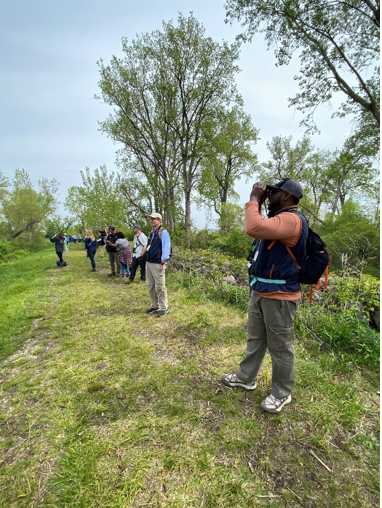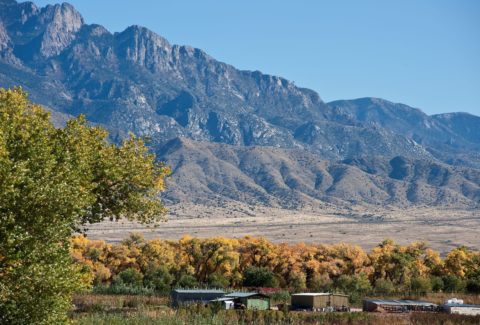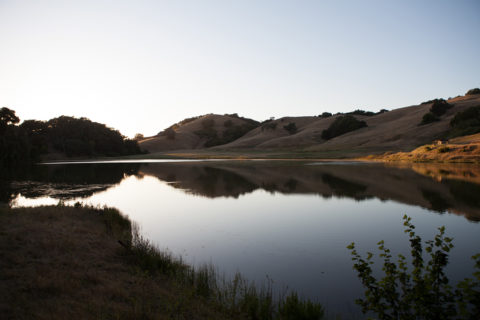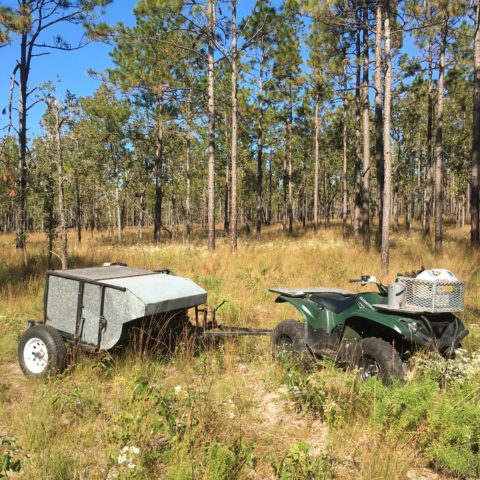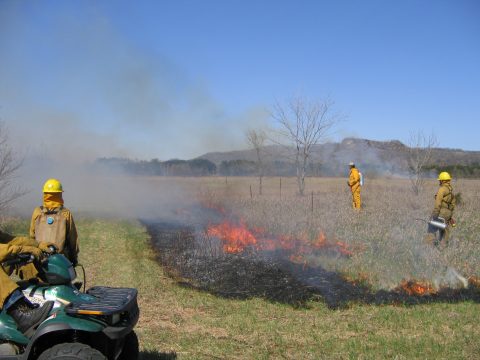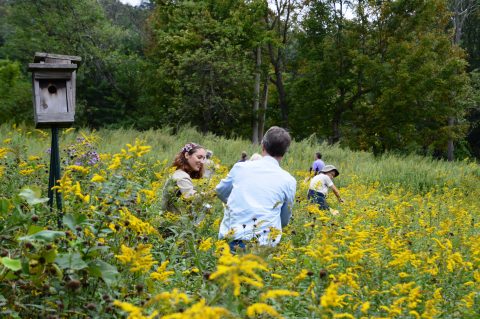2017 Small Grant Awardees
In May, the Cornell Land Trust Small Grants Program awarded its first grants to support strategic bird conservation within the land trust community. The four organizations receiving funds are protecting critical habitats, such as oak forests in Oregon and estuaries in Maine, as well as helping declining bird species, such as the Golden-winged Warbler in Vermont and Lewis’s Woodpecker in Colorado.
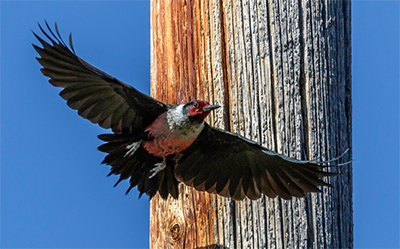
The Central Colorado Conservancy has started a program using citizen-science data from eBird to monitor Lewis’s Woodpecker, a bird of riparian areas that has declined by about 82% since 1966, and is listed as a species of greatest conservation need in Colorado’s State Wildlife Action Plan. “We’ll use the observation data on the woodpecker to identify high priority habitat to target for conservation,” says the Conservancy’s Andrew Mackie. The Conservancy launched a Lewis’s Woodpecker Project website, promotional campaign, and several workshops to train volunteers and educate landowners about the program. Through this data gathering and research, the Conservancy aims to conserve old-growth cottonwood habitat and Lewis’s Woodpecker populations on private lands throughout a six-county service area in Central Colorado.
The Columbia Land Trust has created the East Cascades Oaks Partnership to both raise awareness of the highly threatened Oregon white oak habitat and engage stakeholders and the public in discussions about the science and management of this unique ecosystem in Oregon and Washington. White oak ecosystems support a wide variety of birds and wildlife, especially Neotropical migratory songbirds. “A strategic, collaborative conservation effort will help preserve the connectivity, diversity, quality, and extent of white oak habitat,” says Columbia Land Trust’s Lindsay Cornelius. “We also want to help to reform damaging management practices.” Several subcommitees meet regularly to complete tasks such as drafting a strategic action plan, creating a sustainable funding strategy, identifying and prioritizing research gaps, assessing mapping strategies, utilizing eBird data to determine indicators of quality habitat, and working with a science team to define desired future conditions and a conceptual model for management and conservation.
The Kennebec Estuary Land Trust has developed a bird-monitoring program and is integrating birding and bird diversity into their stewardship and acquisition programs in Maine. “We want to create a volunteer bird monitoring program, plus increase and promote the use of the eBird online observation program in the Kennebec Estuary region,” says Kennebec’s Becky Kolak. They are hosting bird walks in conjunction with local partners on their preserves to introduce the monitoring program, creating eBird hotspots, and crafting informational sheets to guide birders and volunteer monitors through the diverse habitats on their properties and with recording eBird observations. Their biggest success so far is a shift in mindset about how the land trust approaches stewardship and land projects. The small grant funds have enabled them to bring birds to the forefront of the conversation about planning and make it a prominent objective in their land acquisition and management decisions going forward.
Audubon Vermont and several western Vermont land trusts have initiated the Golden Chain Partnership. This collaborative partnership provides technical support to land trusts and other organizations in Vermont to help identify land parcels best suited to support young forest birds, such as the Golden-winged Warbler, and prioritize these lands for protection and effective management. The Golden Chain Partnership also hosts landowner workshops and is creating an outreach strategy to generate continued funding by working with partners such as the USFWS Partners Program, Natural Resources Conservation Service, Vermont Fish and Wildlife Department, and Wildlife Management Institute. “The partnership will help build capacity and recognition for the vital conservation work of land trusts in this region,” says Audubon Vermont’s Mark LaBarr. Audubon is also working with a graduate student to overlay land trust properties with a Golden-winged Warbler habitat model to help land trusts better target landowners for outreach efforts. They are hosting a land trust collaborative meeting, conducting bird surveys on properties that are actively being pursued by land trusts, and building story maps for their partners. The end result will be a “chain” of conserved and improved young forest habitat, stretching from West Haven, north to Middlebury, and up to Charlotte and Hinesburg, Vermont.



